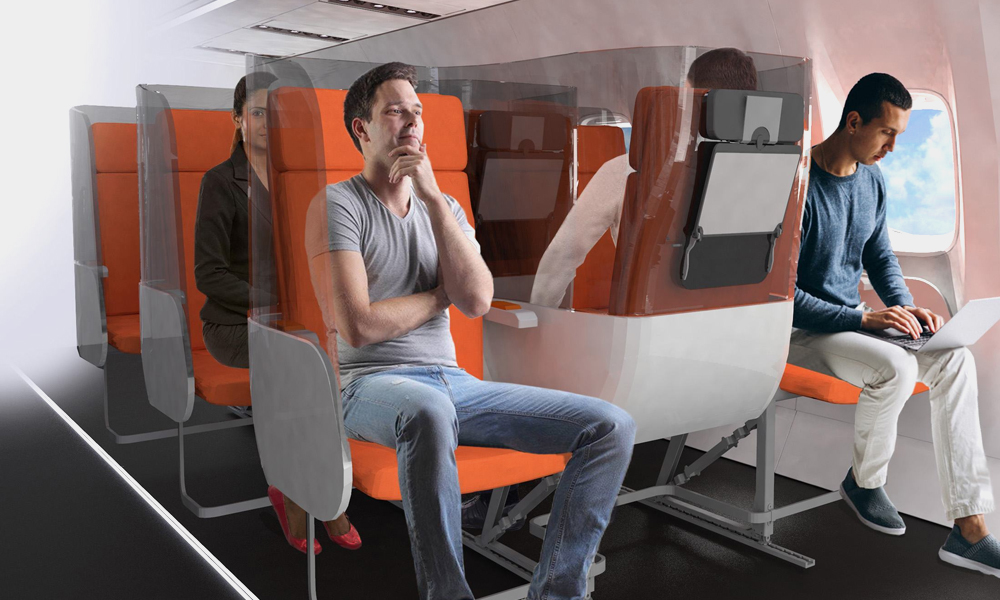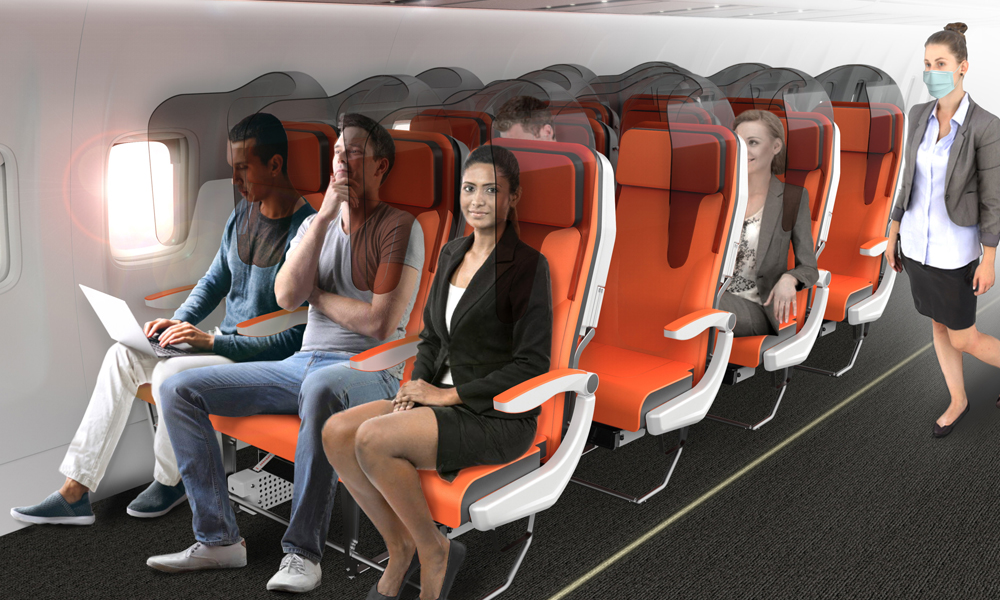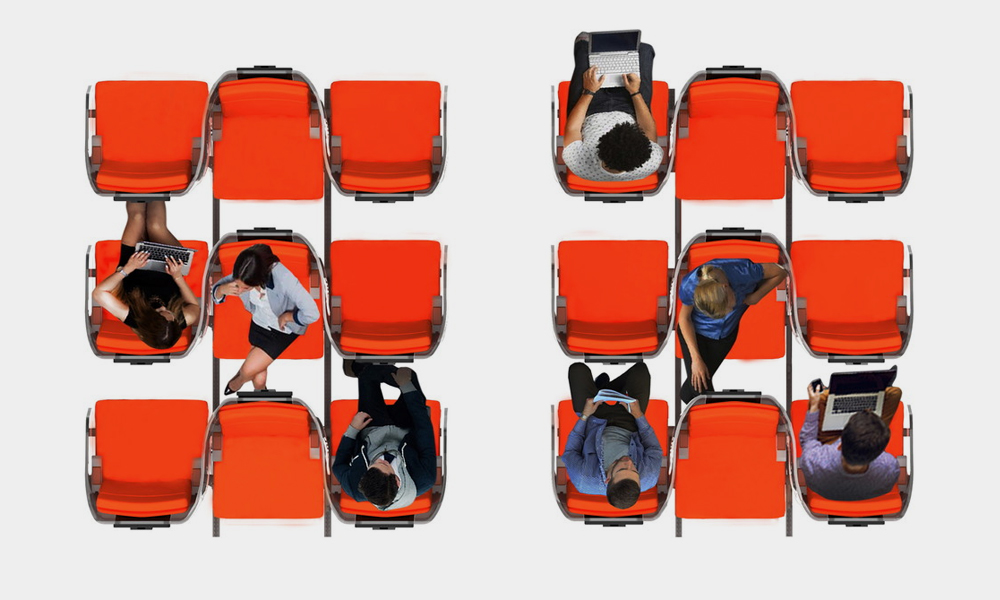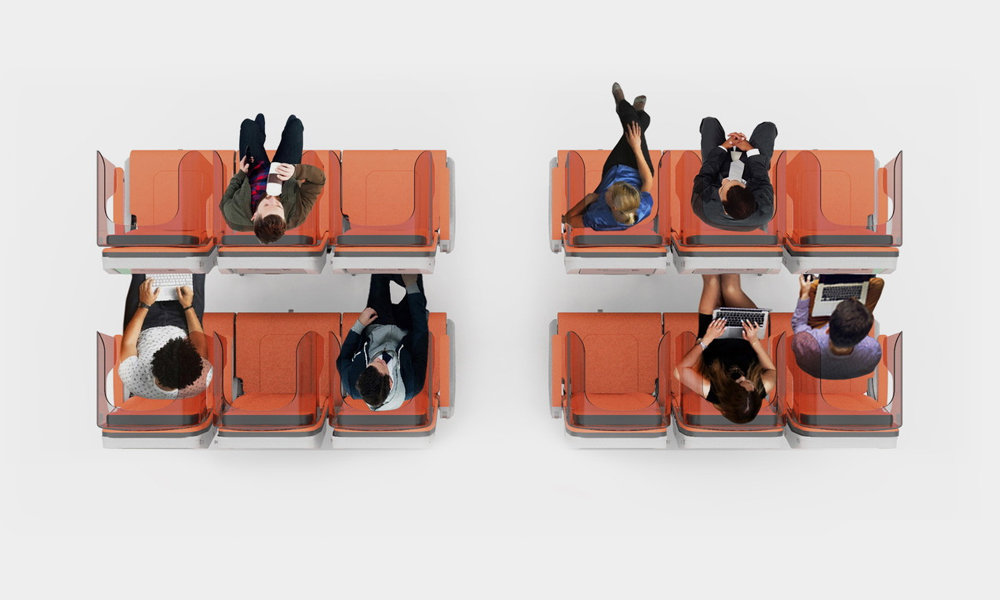Wonder what the future of commercial flying will look like after COVID-19 wreaks its global havoc? Italian company Aviointeriors just came up with two potential solutions to airliner seating for passenger protection. The first one is called the “Glassafe”, and it fits into existing airplane seats to create barriers between passengers without obscuring vision. It also brilliantly prevents droolers from leaning against you and violating your personal space (and health). It even protects aisle passengers from those walking by. Additionally, it keeps costs low for airlines. The second solution is more complex. The Janus seat, inspired by the two-faced Roman God, situates the middle passenger in a rear-facing position and separates the passengers with a plastic barrier. It becomes complicated because the middle passenger faces two people behind him and also forces airlines to reconfigure seating, unlike the Glassafe solution. Regardless, it’s good to see Aviointeriors thinking outside the box to figure out a way to make flyers feel safer and reduce in-air contamination. Look for other companies to come up with solutions and for Aviointeriors’ ideas to evolve.
More Travel

The Coolest Travel Gifts for 2025
These gifts? All good to go.

This Estate in Bordeaux Blends Japanese Craftsmanship with French Wine Customs
Deep in Bordeaux you can get a taste of Japanese craftsmanship at a French winery where east meets west.
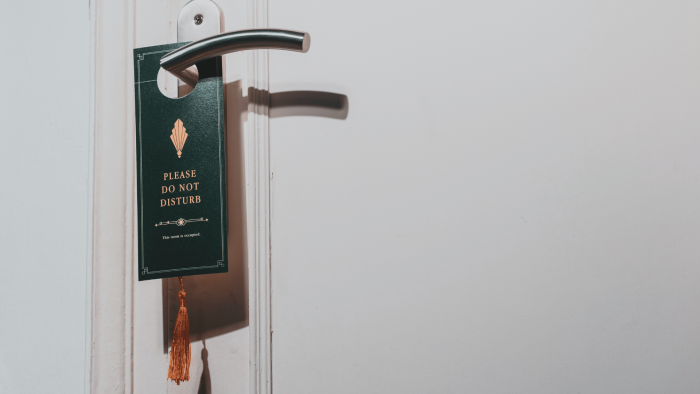
Hotels So Romantic You Won’t Leave the Room
Do not disturb.

